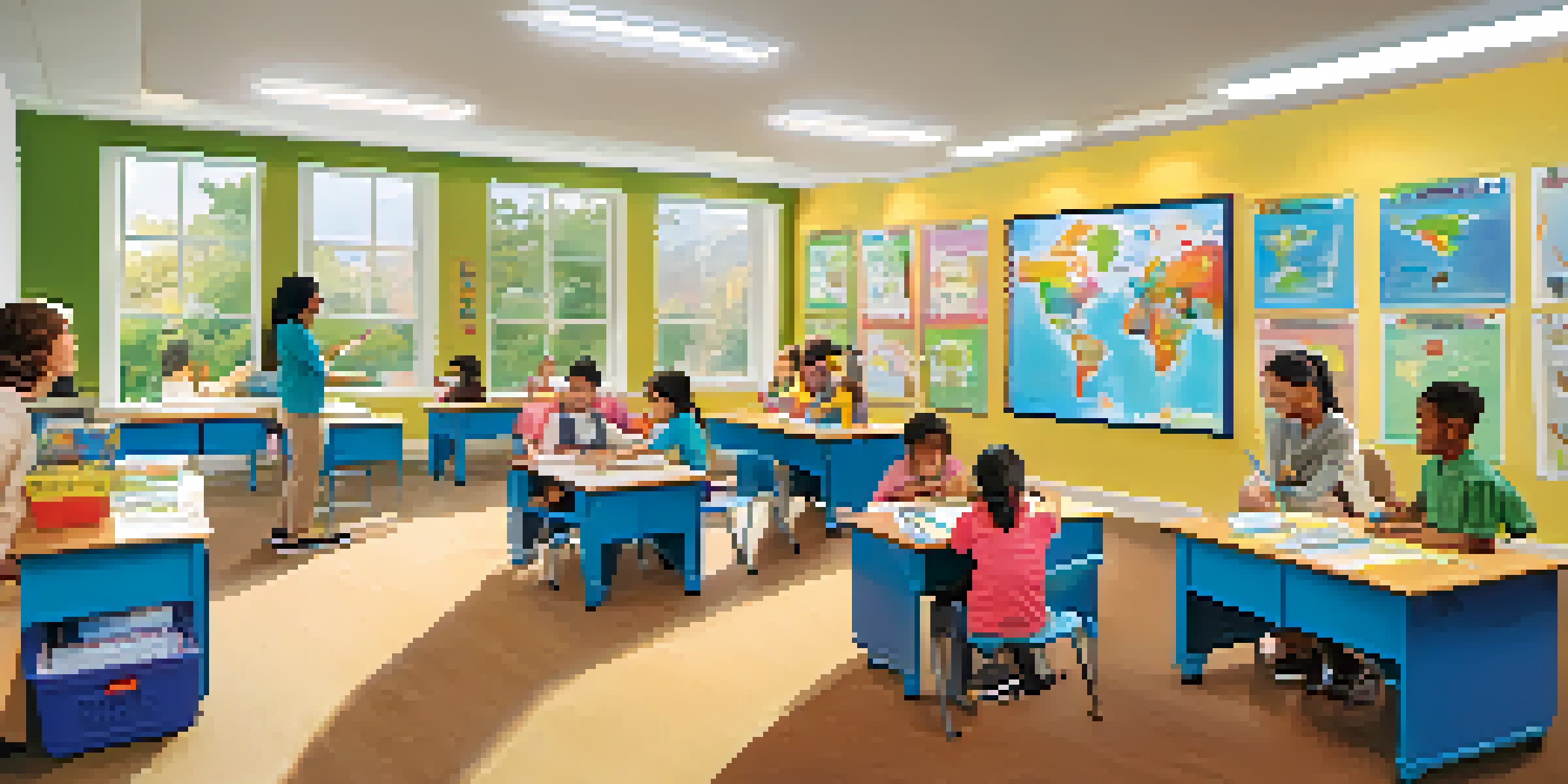Creating CPD Programs for Special Education Professionals

Understanding the Need for CPD in Special Education
Continuous Professional Development (CPD) is essential for special education professionals. It helps educators stay updated with the latest teaching strategies and research in the field. This is particularly important in special education, where student needs can vary widely and evolve over time.
Education is not the filling of a pail, but the lighting of a fire.
By participating in CPD, educators not only enhance their skills but also foster a culture of lifelong learning. This culture is vital because it encourages teachers to reflect on their practices and adapt to meet diverse student needs effectively. Ultimately, this leads to better educational outcomes for students with special needs.
Moreover, CPD programs can help bridge gaps in knowledge and practice. As special education continues to grow, it's crucial for professionals to be equipped with the tools and techniques necessary to support their students adequately.
Identifying Key Learning Objectives for CPD
Before creating a CPD program, defining clear learning objectives is essential. These objectives should be specific, measurable, achievable, relevant, and time-bound (SMART). For instance, a goal could be to enhance understanding of autism spectrum disorders within a six-month period.

Engaging stakeholders, such as educators, parents, and even students, can help identify these objectives. Their insights can provide valuable input on the skills and knowledge gaps that need to be addressed. This collaborative approach ensures the program meets the actual needs of the professionals involved.
Importance of CPD in Special Education
Continuous Professional Development (CPD) enables special education professionals to stay updated and effectively meet the evolving needs of their students.
Additionally, considering various learning styles during this phase can improve engagement. Different professionals may benefit from hands-on workshops, online courses, or peer collaboration, so incorporating a mix of formats can cater to all preferences.
Designing Engaging CPD Activities
Once objectives are set, the next step is designing activities that resonate with professionals. Engaging activities can include interactive workshops, case studies, and simulations that mimic real-life scenarios in special education. This hands-on approach often leads to deeper learning and retention.
An investment in knowledge pays the best interest.
Using technology can also enhance the learning experience. Online platforms can facilitate webinars and virtual discussions, making CPD more accessible for busy professionals. Incorporating multimedia resources, like videos and podcasts, can further enrich the content and maintain interest.
It's crucial to ensure that activities are relevant to daily teaching challenges. When educators see the immediate application of what they learn, they are more likely to engage fully and implement these strategies in their classrooms.
Incorporating Feedback Mechanisms into CPD
Feedback is a vital component of any effective CPD program. By gathering input from participants during and after sessions, facilitators can assess what worked well and what needs improvement. This iterative process helps refine future offerings and ensures they remain relevant.
Creating anonymous surveys can encourage honest feedback without fear of judgment. Questions can focus on the clarity of the information presented, the effectiveness of activities, and the overall satisfaction with the program. Analyzing this data can reveal trends and areas for growth.
Designing Effective CPD Activities
Engaging and relevant CPD activities, such as interactive workshops and simulations, enhance learning and facilitate the immediate application of new strategies in the classroom.
Moreover, encouraging peer-to-peer feedback can foster a supportive learning environment. Educators can share their experiences and insights, promoting collaborative improvement and reinforcing community among special education professionals.
Utilizing Experienced Facilitators for CPD
Choosing the right facilitators is key to the success of CPD programs. Experienced professionals who have a background in special education can provide invaluable insights and real-world examples. Their expertise not only enhances credibility but also inspires participants to embrace new strategies.
Facilitators should also be skilled in adult learning principles, understanding how adults learn differently than children. This knowledge allows them to create engaging and effective learning experiences that resonate with educators' unique needs.
Involving guest speakers who are specialists in specific areas, such as behavior management or communication strategies, can diversify the program. Their unique perspectives can spark new ideas and encourage educators to think outside the box.
Evaluating the Impact of CPD Programs
Evaluating the effectiveness of CPD programs is essential to ensure they are meeting their objectives. This can involve assessing changes in teacher practice, student outcomes, or overall satisfaction with the program. Setting up clear metrics before the program starts can help gauge these impacts accurately.
Follow-up surveys and observations can provide insight into how participants are applying what they've learned. Are they implementing new strategies in their classrooms? Are students benefiting from these changes? Gathering this data can highlight successes and areas that may need further support.
Evaluating CPD Program Impact
Regular evaluation of CPD programs ensures they meet objectives and demonstrates accountability by highlighting the effectiveness of professional development efforts.
Regular evaluation not only helps in refining future CPD offerings but also demonstrates accountability to stakeholders. By showing tangible results, educators can justify the time and resources invested in professional development.
Fostering a Culture of Continuous Improvement
Creating CPD programs is not just about one-off training sessions; it's about fostering a culture of continuous improvement. Encouraging educators to pursue ongoing learning opportunities can lead to a more dynamic and responsive educational environment. This culture can motivate staff to keep pushing their boundaries and exploring new ideas.
To support this culture, institutions can provide time and resources for educators to engage in CPD activities. For example, offering stipends for attending conferences or online courses can show that professional development is a priority.

Moreover, celebrating successes and sharing best practices among staff can further motivate educators. Recognizing their efforts in implementing new strategies can reinforce the value of CPD and encourage others to participate actively.